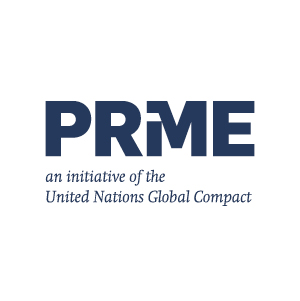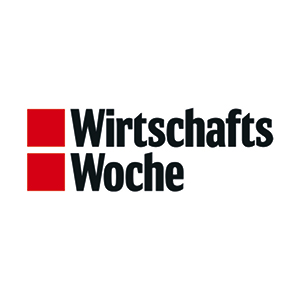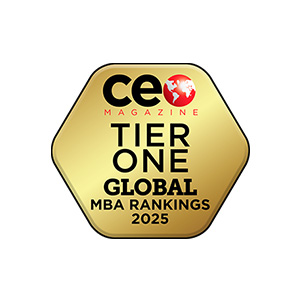What is a weighted sum model?
The utility analysis (Nutzwertanalyse) is one of the multi-criteria evaluation methods in decision theory. It helps to structure complex decisions by defining and weighting several evaluation criteria for different alternatives, and then calculating an overall utility score. This process transforms qualitative and quantitative assessments into a transparent ranking of possible courses of action, enabling a well-founded selection of the best alternative.
Basic principles and objectives
The basic idea of the weighted sum model is to evaluate different alternative courses of action using a variety of criteria. Each criterion is assigned a weight that reflects its relative importance. The alternatives are then evaluated and the overall benefit is calculated in order to make the best decision.
Target:
The main aim of the weighted sum model is to create a transparent and comprehensible basis for decision-making that takes all relevant factors into account and enables a well-founded selection.
Differentiation from other valuation methods
The weighted sum model differs from other methods such as the cost-benefit analysis or the SWOT analysis in that it focuses on the consideration and weighting of several criteria.
- Cost-benefit analysis: Focuses mainly on the financial aspects and quantifiable costs and benefits.
- SWOT analysis: Evaluates strengths, weaknesses, opportunities and threats without applying a quantitative weighting.
The weighted sum model therefore offers a more comprehensive view that takes equal account of qualitative aspects and thus supports balanced decision-making. [4]
Areas of application of the weighted sum model
The weighted sum model is used in various areas to make well-founded and transparent decisions. It is particularly useful when qualitative and quantitative criteria need to be considered simultaneously.
Steps for carrying out a weighted sum model
Conducting a weighted sum model follows a systematic process that ensures that all relevant criteria are taken into account and a well-founded decision is made. This process consists of several steps that must be implemented carefully and methodically.
- Identification and weighting of the criteria: The first step is to identify the relevant criteria that are decisive for the evaluation of the alternatives. Each criterion is given a weighting that reflects its relative importance.
Example: When evaluating investment projects, criteria such as costs, potential profit, risks and strategic relevance could be taken into account. - Evaluation of the alternatives: The next step is to evaluate the various alternatives based on the defined criteria. This can be done using point scores or other rating scales.
Example: A project could receive a score from 1 to 10 for each criterion, with 10 being the best score. - Calculating the overall benefit: The weights and scores of each criterion are multiplied and summed to calculate the overall benefit of each alternative.
This enables a direct comparison of the alternatives.
Formula: Overall benefit = sum (weighting * rating) for all criteria. - Decision based on the results: The alternative with the highest overall benefit is identified as the best choice. This decision can then be integrated into the further decision-making process.
Example: If a project has the highest overall benefit sum, it is selected for implementation. [6]
Example of a weighted sum model
To better understand the weighted sum model, it is helpful to look at a concrete example. In this section, a weighted sum model is carried out for the selection of a new office location. The criteria include cost, accessibility, facilities and environment.
Case study: Site selection for a new office building
A medium-sized company is planning the construction of a new office building and is faced with the decision of choosing the optimal location. There are three locations to choose from, each offering different advantages and disadvantages. The selection is based on a weighted sum model that evaluates the most important criteria such as costs, infrastructure, transport connections and availability of labor.
Locations available for selection:
-
Location A:
- Costs: Moderately high land costs, low operating costs due to favorable local energy prices.
- Infrastructure: Excellent infrastructure, modern logistics services available.
- Transport links: In close proximity to a highway and a major train station.
- Workforce: Good availability of qualified workers.
-
Location B:
- Costs: Very low land costs, higher operating costs due to more expensive energy supply.
- Infrastructure: Averagely developed, potential for expansion available.
- Transport links: Less well connected, far from the nearest highway, no direct rail connection.
- Labor force: Limited availability, difficult to recruit.
-
Location C:
- Costs: Average land and operating costs.
Infrastructure: Well developed, some limitations in terms of logistics.
Transport links: Good access to a highway, no direct access to a major train station.
Labor force: Sufficient availability with the required qualifications.
Step 1: Identification and weighting of the criteria
The first criteria are identified and weighted to determine their relative importance:
|
Criterion
|
Weighting (%)
|
|
Costs
|
30
|
|
Infrastructure
|
25
|
|
Transportation
|
20
|
|
Workforce
|
25
|
Step 2: Evaluation of the alternatives
Three locations (A, B, C) are evaluated on the basis of the criteria. They are rated on a scale of 1 to 10, with 10 being the best rating.
|
Criterion
|
Weighting (%)
|
Location A
|
Location B
|
Location C
|
|
Costs
|
30
|
6
|
8
|
7
|
|
Infrastructure
|
25
|
9
|
6
|
7
|
|
Transportation
|
20
|
9
|
5
|
8
|
|
Labor force
|
25
|
8
|
5
|
7
|
Step 3: Calculation of the total benefit
The total benefit for each location is calculated by multiplying the ratings by the weightings and adding them together.
|
Location
|
Calculation
|
|
Location A
|
(6 * 0,30) + (9 * 0,25) + (9 * 0,20) + (8 * 0,25) = 7,85
|
|
Location B
|
(8 * 0,30) + (6 * 0,25) + (5 * 0,20) + (5 * 0,25) = 6,15
|
|
Location C
|
(7 * 0,30) + (7 * 0,25) + (8 * 0,20) + (7 * 0,25) = 7,20
|
Step 4: Decision based on the results
Based on the weighted sum model, the overall benefit is as follows:
- Location A: 7.85
- Location B: 6.15
- Location C: 7.20
Result: Site A has the highest overall benefit and is therefore selected as the optimal location for the new office building. This decision takes into account the moderately high costs, the outstanding infrastructure, the excellent transport connections and the good availability of labor, which offer the best overall conditions for the company's operations. [7]
Advantages of the weighted sum model
The weighted sum model offers numerous advantages that make it a popular tool for decision-making processes. Its systematic and transparent approach makes it possible to structure complex decisions and achieve well-founded, comprehensible results.
Transparent and comprehensible decision-making
The weighted sum model enables a clear and transparent presentation of the decision-making process. The explicit weighting and evaluation of the criteria makes every decision comprehensible and well documented.
Example: In a decision-making process for selecting a new supplier, all those involved can understand the weighted criteria and evaluations, which leads to greater acceptance of the decision.
Consideration of qualitative criteria
A major advantage of the weighted sum model is the inclusion of both quantitative and qualitative criteria. This means that factors that are difficult to measure, such as the working environment or corporate image, can also be included in the decision.
Example: When choosing a new office location, criteria such as the attractiveness of the surroundings or proximity to public transportation can be taken into account in addition to costs.
Flexibility and adaptability
The weighted sum model is very flexible and can be adapted to the specific requirements and framework conditions of a decision-making process. Weightings and criteria can be changed and adapted as required.
Example: A company can adjust the weightings of the criteria in a weighted sum model to take account of new market conditions or strategic priorities.
Support with complex decisions
The weighted sum model is particularly useful for complex decisions with many influencing factors. It provides a structured method for objectively comparing different alternatives and making an informed decision.
Example: A project team that needs to evaluate different software solutions can use the weighted sum model to systematically evaluate the alternatives and select the most suitable solution.
Summary
The weighted sum model offers numerous advantages that make it a valuable tool in decision-making. Its transparent and comprehensible approach, the inclusion of qualitative criteria as well as its flexibility and adaptability make it particularly suitable for complex decisions. By systematically evaluating and weighting the criteria, the weighted sum model supports well-founded and objective decisions. [8]
Disadvantages and points of criticism
The weighted sum model has some disadvantages and points of criticism that must be taken into account when using it. Subjectivity, the effort required to perform it, its dependence on the quality of the data and the potential for manipulation are important aspects that can affect the accuracy and reliability of the results. Despite these challenges, the weighted sum model remains a valuable tool that can be used effectively through careful planning and objective evaluation.
Subjectivity in weighting and evaluation
One of the biggest criticisms of the weighted sum model is the subjectivity that plays a role in weighting the criteria and evaluating the alternatives. The weightings and evaluations are often based on subjective assessments of the decision-makers, which can lead to distortions and inaccuracies.
For example, two decision makers may have different views on how important the connectivity of a new office location is compared to the cost, leading to different weightings and potentially different decisions.
Complexity and expense of implementation
The weighted sum model can be very complex and time-consuming, especially if many criteria and alternatives have to be considered. Careful identification, weighting and evaluation of the criteria requires a lot of time and resources.
Example: In large projects with many stakeholders and complex requirements, conducting a weighted sum model can be very time-consuming and require considerable human and financial resources.
Dependence on the quality of the data
The accuracy and reliability of the weighted sum model depends heavily on the quality of the underlying data. Inaccurate or incomplete data can lead to incorrect results and suboptimal decisions.
Example: If the costs for different office locations cannot be accurately determined, the valuations and overall benefits could be distorted, leading to an incorrect decision. [9]














